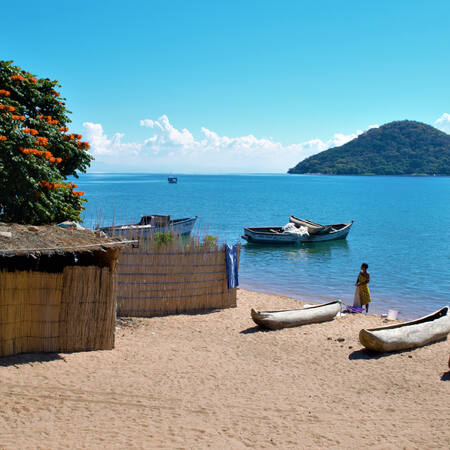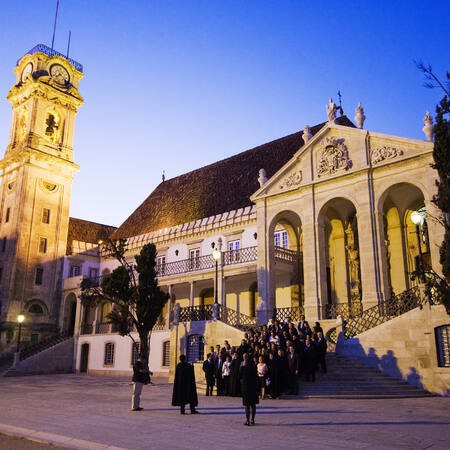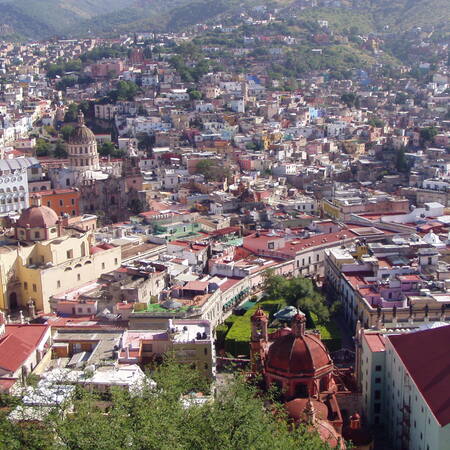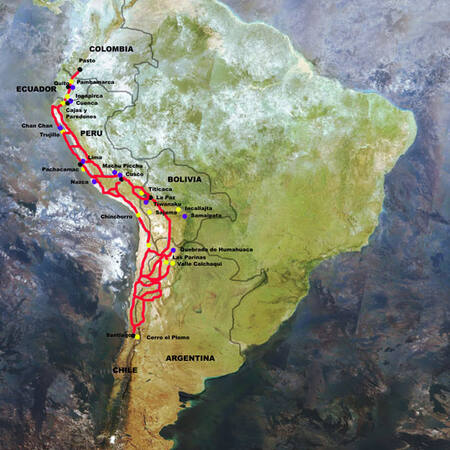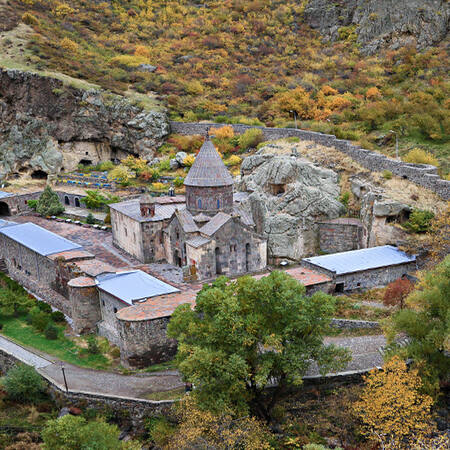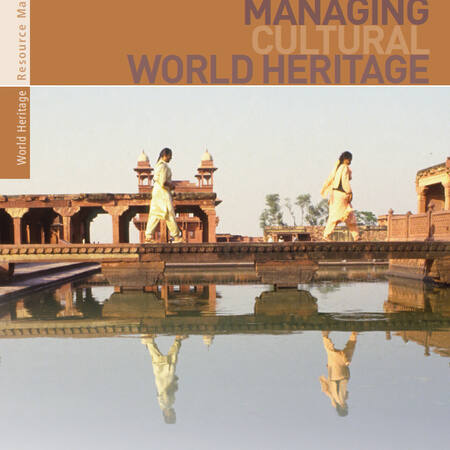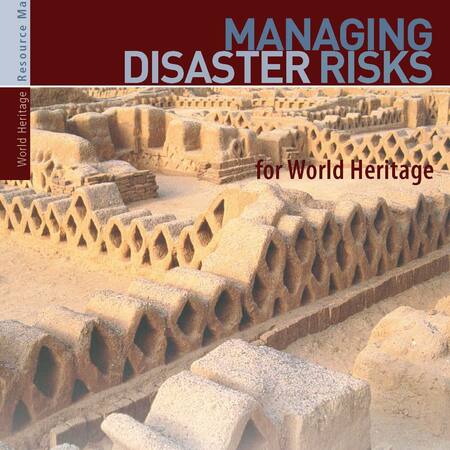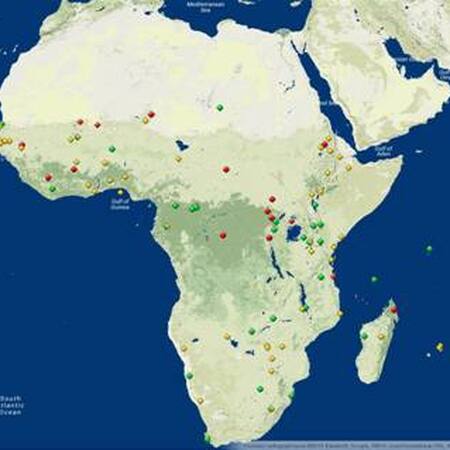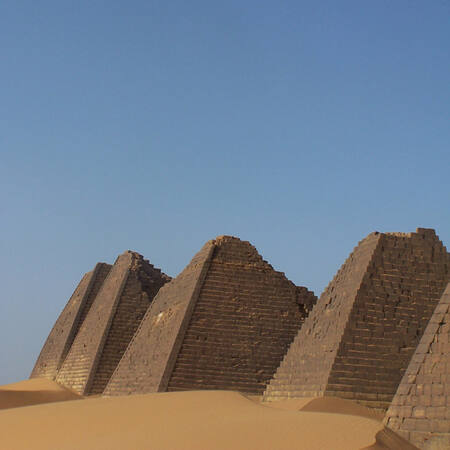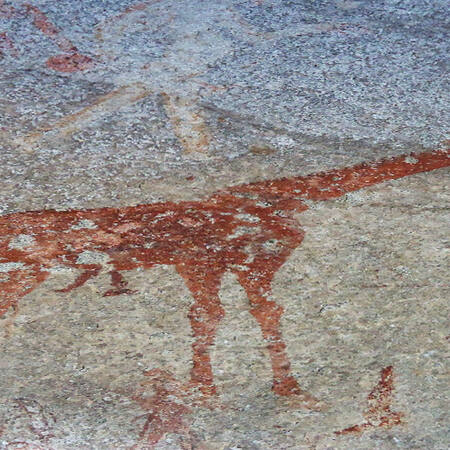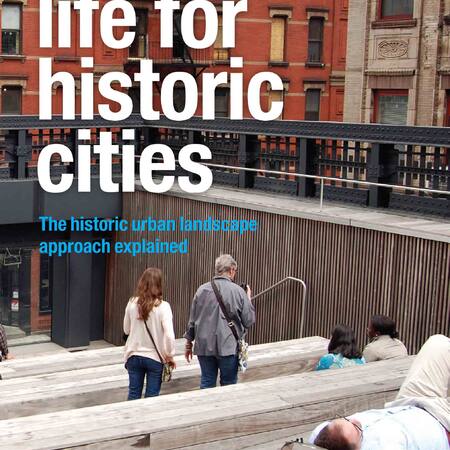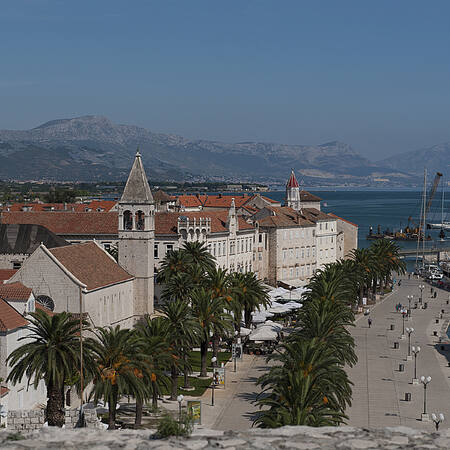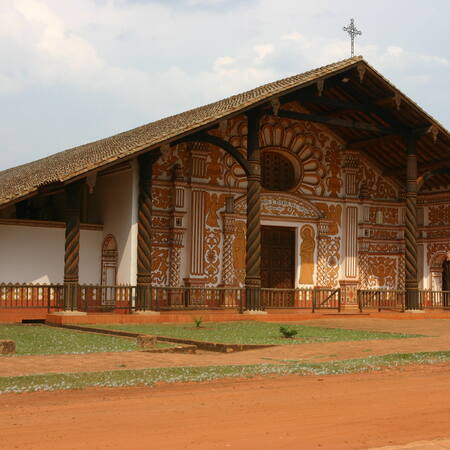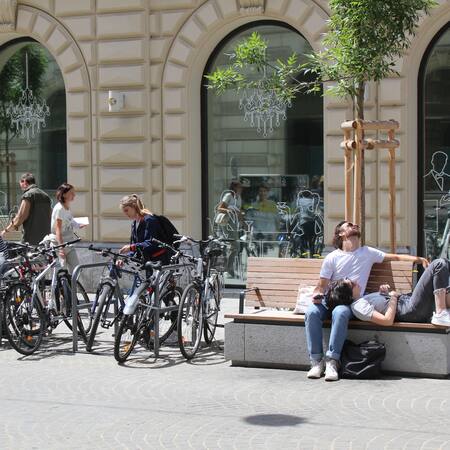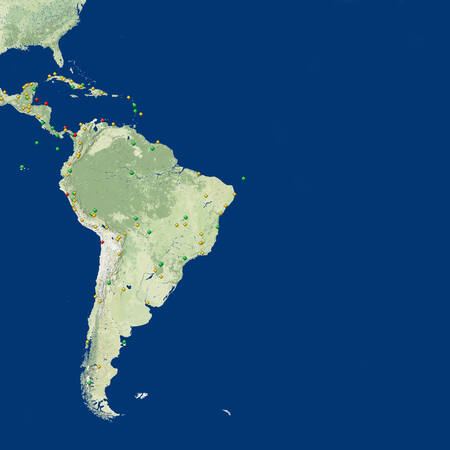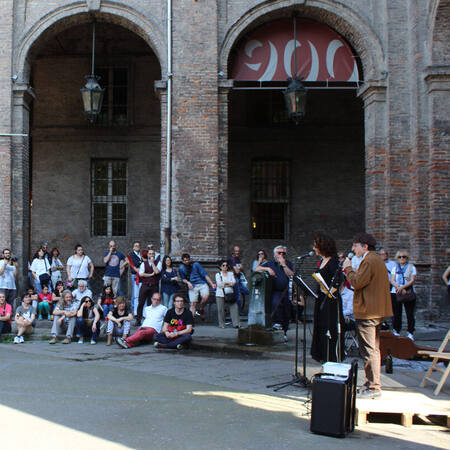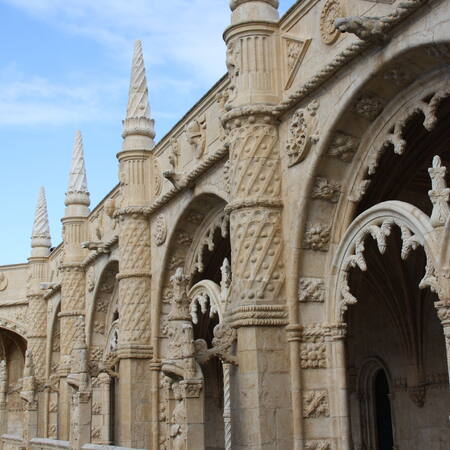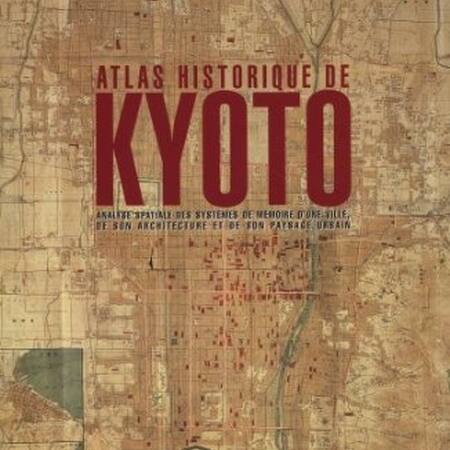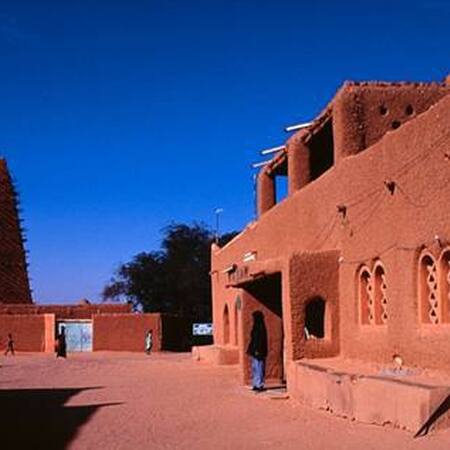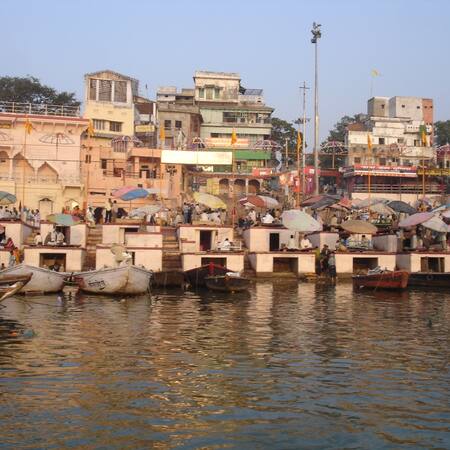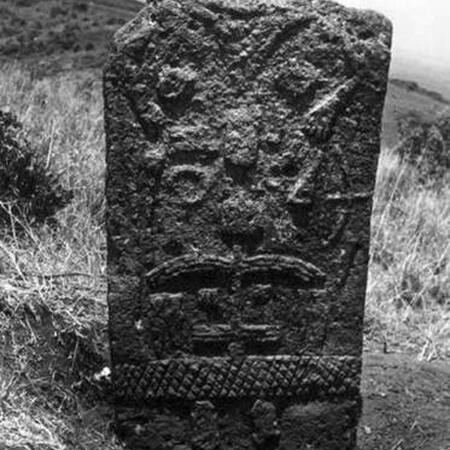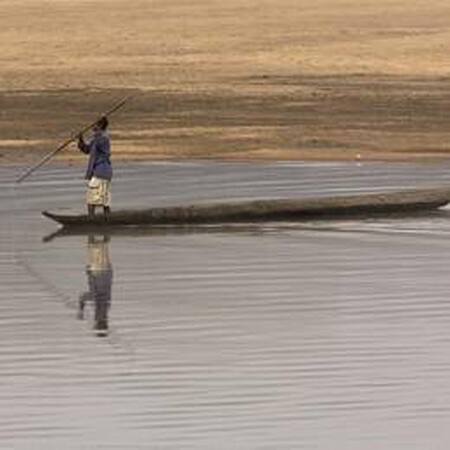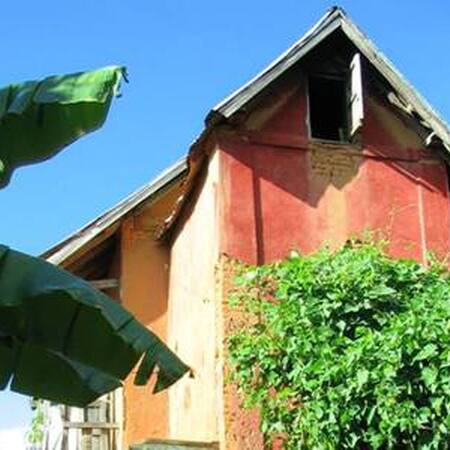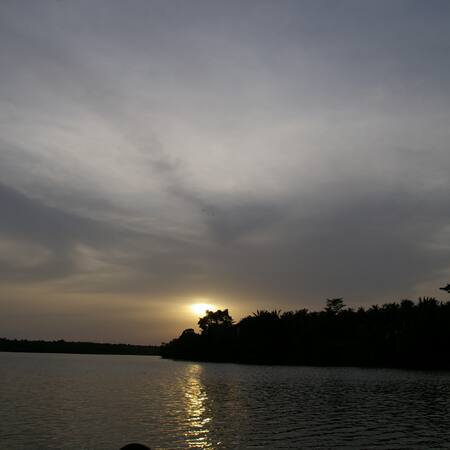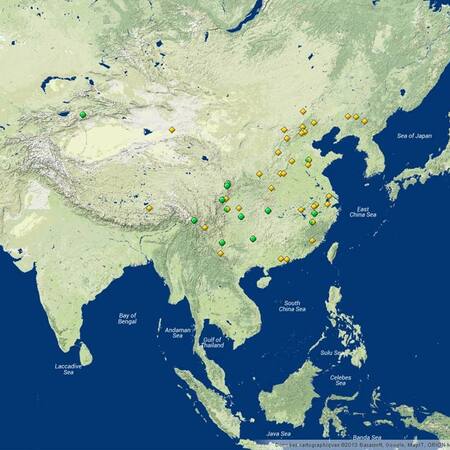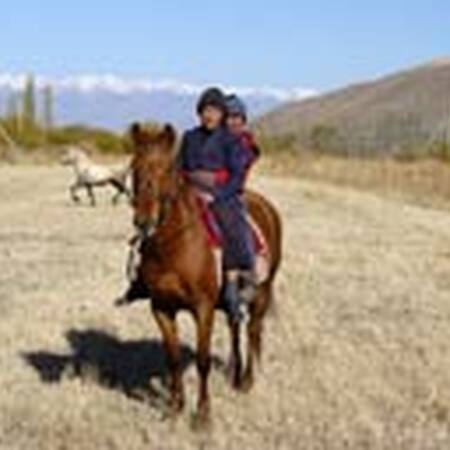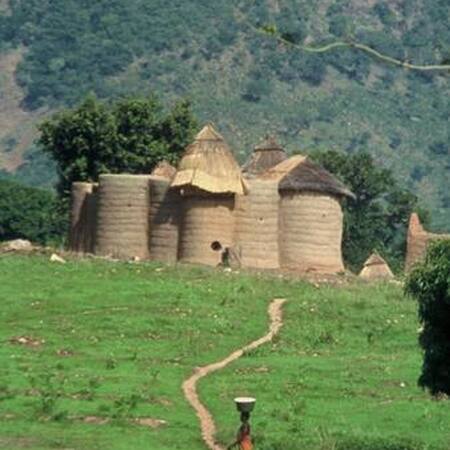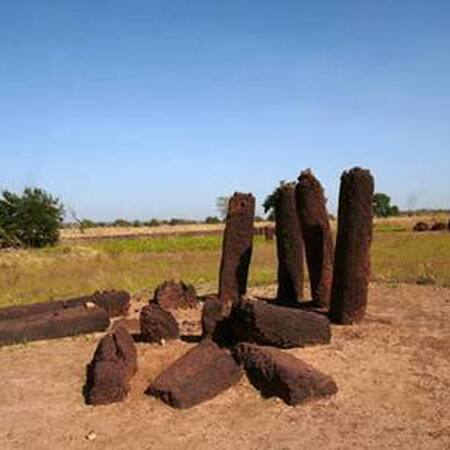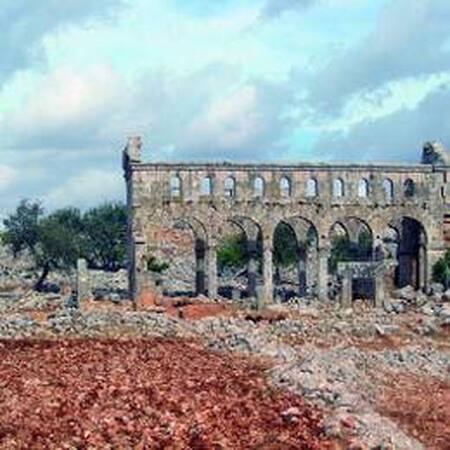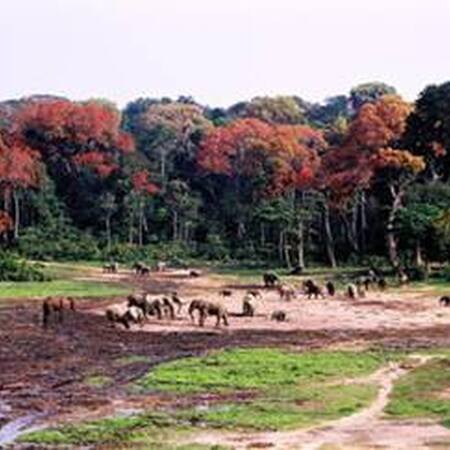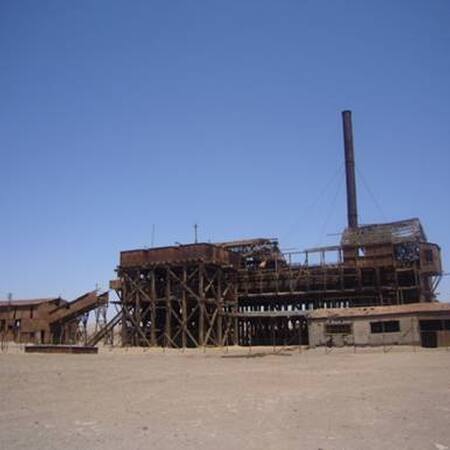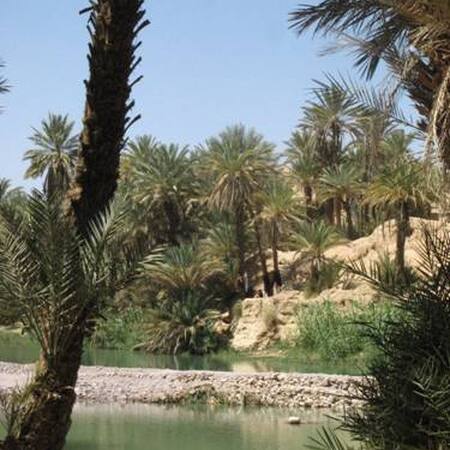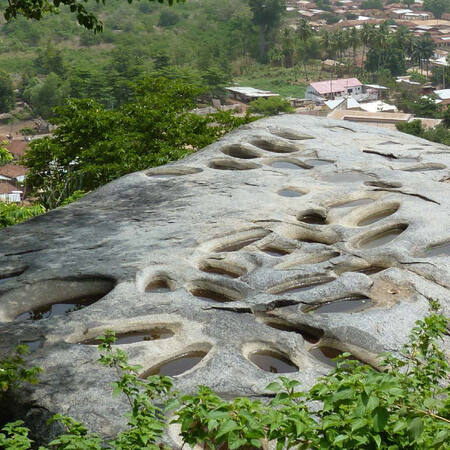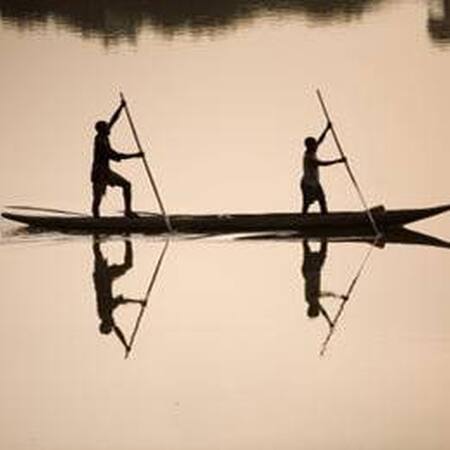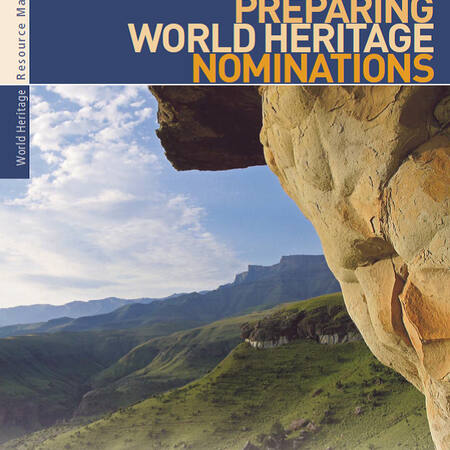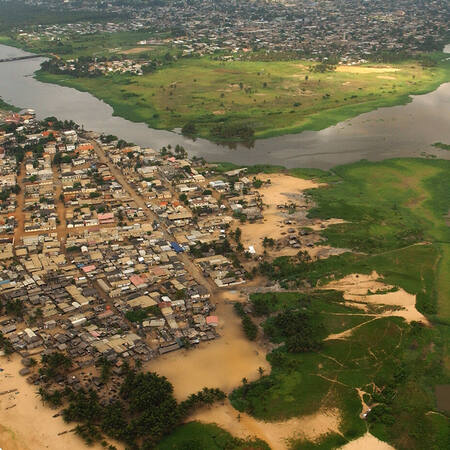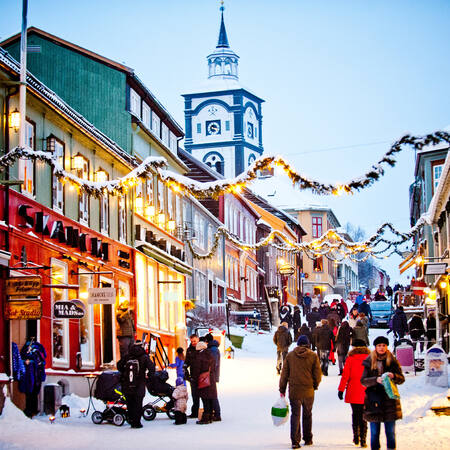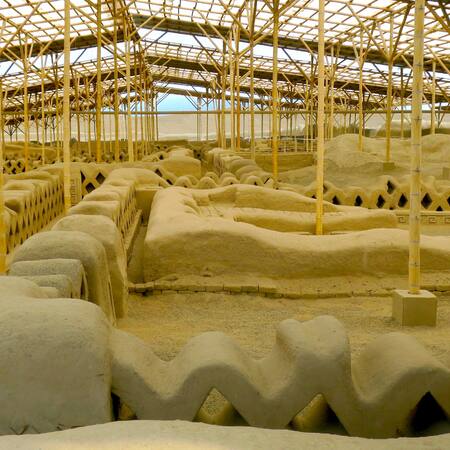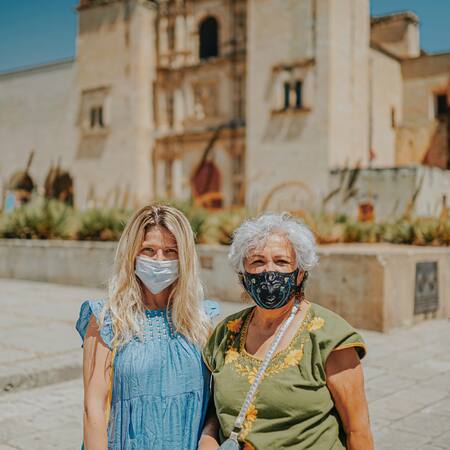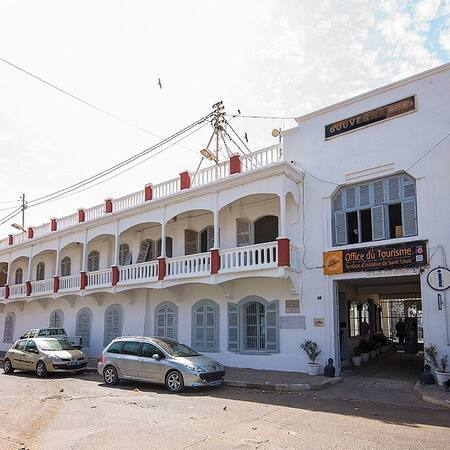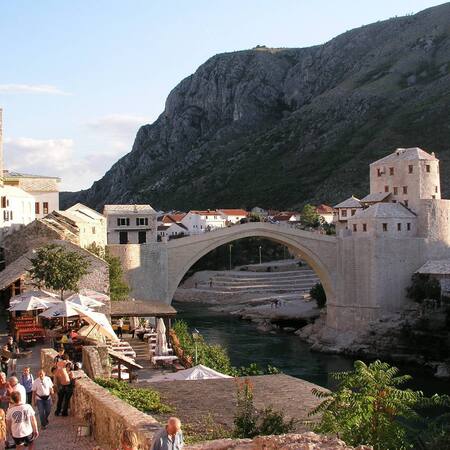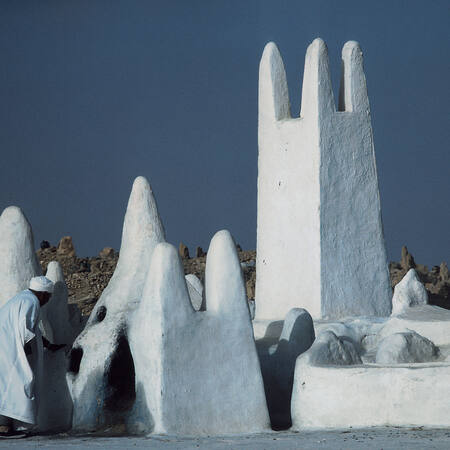Action Plans Latin America and the Caribbean As follow up of Decision 37 COM 10A adopted by the World Heritage Committee at its 37th session (Phnom Penh, 2013) and based on the results of the 2nd cycle of the ...
Lake Malawi fish conservation project
Located at the southern end of the great expanse of Lake Malawi, with its deep, clear waters and mountain backdrop, the national park is home to many hundreds of fish species, nearly all endemic. Its importance for ...
Literary tourism in the university town of Coimbra (Portugal)
A project to create a digital map of places associated with literature aims to promote sustainable cultural tourism, relieving tourism pressures in the historic areas and encouraging visitors to explore other parts ...
Local management system of the Historic Town of Guanajuato (Mexico)
The system includes a new local coordination office dedicated to the conservation and sustainable development of the historic centre.
Argentina, Bolivia, Chile, Colombia, Ecuador and Peru share a common cultural heritage of outstanding value: the Qhapaq Ñan, or Main Andean Road. For the past three years the World Heritage Centre has been ...
Management of World Heritage Sites in Armenia
UNESCO seeks to encourage the identification, protection, preservation and conservation of cultural and natural heritage around the world considered to be of outstanding value to humanity. This is embodied in the ...
Managing Cultural World Heritage
This manual provides guidance for States Parties and all those involved in the care of World Heritage cultural properties on how to comply with the requirements of the World Heritage Convention.
Managing Disaster Risks for World Heritage
This first Manual within the series concerns the management of disaster risks for World Heritage properties. It focuses on one approach to the principles, methodology and process for managing disaster risks at ...
Within the framework of the France-UNESCO Cooperation Agreement, the French Ministry of Culture and the Director General of heritage for several African countries organized a week of meetings for directors of the ...
Meroe, Republic of the Sudan – Preparatory Assistance for the nomination of ‘The Island of Meroe’
The sites of Meroe, Naqa and Musawwarat es-Sufra, located in the Nile province of Sudan were the heartland of the Kush Kingdom from the 8th Century B.C to the 4th Century AD. Otherwise known as ‘The Island of Meroe’ ...
Mitigating threats to Rock Art Heritage in Zimbabwe
Zimbabwe has benefited from several initiatives in the field of Rock Art conservation. These initiatives mainly consisted of participation in training programmes with sub-regional scope that took place about a ...
At the start of 2001 the UNESCO World Heritage Centre, ICOMOS (International Council on Monuments and Sites) and DOCOMOMO (Working Party for the Documentation and Conservation of buildings, sites and neighbourhoods ...
An innovative initiative employs the Sustainable Development Goals as monitoring tools to track the contribution of heritage-related initiatives towards sustainable development.
Natural and Cultural Heritage of the Ohrid region
Towards strengthened governanceof the shared transboundary natural and cultural heritage of the Lake Ohrid region © This European Union funded project aims to improve transboundary cooperation ...
New life for historic cities: The historic urban landscape approach explained
This booklet calls to involve more people in preservation efforts, raise levels of awareness, and seek innovative schemes. By actively engaging public, private and civic sectors the city, historic and contemporary, ...
Note 1 Identifying and mapping attributes that convey the Outstanding Universal Value of a World Heritage property © UNESCO About Purpose and Scope Context Notes Case Studies ...
Note 2 Identifying sensitive areas and preparing vulnerability assessment related to wind energy projects © UNESCO About Purpose and Scope Context Notes Case Studies ...
Note 3 – Identification des détenteurs de droits et autres parties prenantes, et outils d’engagement
Identifying rights-holders and other stakeholders is a key activity to better understand the relationship between communities and individuals with a property. The identification of rights-holders and other ...
The following table may assist also in the preparation of the scoping report
Note 5 – Visual Impact Assessment
A Visual Impact Assessment (VIA) is a specific study that focuses on assessing the visual and aesthetic impacts of a proposed project. This type of assessment is not a stand-alone study but should be part of the ...
Cumulative impacts can be defined as a result of several additional, often individually insignificant changes or effects. They are often neither measured nor accounted for before their effect grows progressively ...
Online Training for the Periodic Reporting Exercise in Asia and the Pacific
Online Training for the Periodic Reporting Exercise in Asia and the Pacific
At its 19th session (UNESCO, 2013), the General Assembly of States Parties to the World Heritage Convention decided (Resolution 19 GA 4) to fully apply Article 8, paragraph 2, of the World Heritage Convention which ...
Oral Archives of the World Heritage Convention
Oral Archives of the World Heritage Convention Canada Research Chair on Built Heritage --> Under the leadership of the Canada Research Chair on Built Heritage at the University of Montreal, ...
Participatory budgeting in Trogir (Croatia)
The participatory budgeting and decision-making model enables local residents to decide on the application of part of the city’s budget and the practical initiatives to be carried out in their city.
Participatory Management Plan for Jesuit and Franciscan Missionary Heritage
This project aims to strengthen the management capacity between the authorities responsible for cultural heritage management in Bolivia, and ensure the active participation of departmental, regional and local ...
Pedestrianisation of historic streets and public spaces in Graz (Austria)
As part of a wider effort to create a pedestrian-only zone in the historic centre, the city of Graz carried an ambitious programme to re-design its historic streets and public spaces through high-quality design ...
Periodic Reporting 1st Cycle: Africa
Conclusions and recommendations of the synthesis Report on the state of conservation of the World Heritage in Africa, submitted in accordance with the strategic approach approved by the World Heritage Committee at ...
Periodic Reporting 1st Cycle: Arab States
Final report of the synthesis of the periodic reports for the Arab Region submitted in accordance with the strategy approved by the 23rd session of the World Heritage Committee in December 1999 in Marrakesh ...
Periodic Reporting 1st Cycle: Asia & Pacific (2003)
Between 1997 and 2003, the 39 States Parties (27 Asian & 12 Pacific) of the Asia and Pacific Region prepared National Periodic Reports, both reporting on the administrative and legal action taken at the national ...
Periodic Reporting 1st Cycle: Europe and North America
The First Cycle of the Periodic Reporting exercise was carried out from 2001 to 2006 for Europe and from 2001 to 2005 for North America. The exercise provided an opportunity for States Parties to highlight a number ...
Periodic Reporting 1st Cycle: Latin America and the Caribbean (2004)
The UNESCO World Heritage Centre, through the Adviser for World Heritage in Latin America and the Caribbean based at the UNESCO Office in Montevideo, coordinated the periodic reporting process, providing assistance ...
Periodic Reporting 2nd Cycle : Latin America and the Caribbean (2013)
The preliminary process was implemented in cooperation with some Regional Offices (Lima, Quito, Montevideo, Guatemala, Costa Rica and Havana), and some of the Category 2 Centres approved by the General Conference in ...
Periodic Reporting 2nd Cycle: Africa (2011)
This report presents the results of the Second Cycle of Periodic Reporting in the Africa region. The exercise involved the 44 States Parties which had ratified the 1972 Convention Concerning the Protection of the ...
Periodic Reporting 2nd Cycle: Arab States (2010)
At its 32nd session, the World Heritage Committee decided on the preparation of the Second Cycle of Periodic Reporting (Decision 32 COM 11E) and on the launching of the exercise with the Arab States (document ...
Periodic Reporting 2nd Cycle: Asia & Pacific (2012)
The second cycle of Periodic Reporting for the Asia and Pacific was launched by the World Heritage Committee at its 34th session in Brasilia, Brazil in August 2010. All 41 State Parties to the Convention in Asia and ...
Periodic Reporting 2nd Cycle: Europe and North America region (2012-2015)
In Europe, 49 States Parties and 432 World Heritage properties (382 cultural, 41 natural, 9 mixed) participated in the Second Cycle of the Periodic Reporting Exercise (2012-2015). The exercise was coordinated by ...
Polo del '900: an inclusive, multi-functional cultural centre in downtown Turin (Italy)
The model of the Polo del 900 proposes collaboration as a solution for institutional and cultural fragmentation which forms the core of a new ecology of creative cultural systems and puts community at the core of ...
Portugal and the city of Elvas
UNESCO Portugal and the City of Elvas Project Page © Limes.Media/Tim Schnarr Partners Implementation of the UNESCO Culture|2030 Indicators in Portugal and the city of Elvas is with the ...
Preparation and publication: “Historic atlas of Kyoto”, Japan
The “Historical Atlas of Kyoto: Spatial Analysis of the Memory Systems of a City, its Architecture and Urban Landscape” (In French: « Atlas historique de Kyoto: Analyse spatiale des systèmes de mémoire d’une ville, ...
Founded in the ninth century, the Agadez, Niger, occupies a prominent position on the crossroads of the principal commercial routes of the Sahara, which allowed it to play an important role in the region until the ...
Preparatory assistance and feasibility study for the inscription of Varanasi, India
As part of the Indian Heritage Cities Network project, and in link with the “Rivers and heritage” initiative, a seminar was held in February 2007 in Varanasi, India. The objective was the enhancement of this ...
The France-UNESCO Cooperation Agreement, similar to the technical cooperation provided to the Town of Luang Prabang in the Lao People's Democratic Republic, has provided technical and financial support to national ...
Preparatory assistance for an extension to the site of Tiya, Ethiopia
Ethiopia has numerous megalithic sites. The most important of them is Tiya, which was inscribed on the World Heritage List in 1980. It has thirty-six monuments, including thirty-two stelae inscribed with sometimes ...
Preparatory assistance for inscription of the Rainforests of the Atsinanana, Madagascar
The Rainforests of the Atsinanana are predominantly old-growth forests, and, as such, are critically important for the maintenance of ecological processes and the survival of Madagascar’s unique biodiversity. The ...
Preparatory assistance for inscription of the Royal Domain of Mbé cultural landscape, Congo
Located 200km from Brazzaville, Congo, the Royal Domain of the Mbé was inscribed on the Tentative Lists in 2008. The property, which is also of significant historical value, is made up of a group of areas linked to ...
Preparatory assistance for inscription of the Royal Hill of Ambohimanga
The Royal Hill of Ambohimanga in Madagascar consists of a royal city and burial site, and an ensemble of sacred places. It is associated with strong feelings of national identity, and has maintained its spiritual ...
The Ehotilé Islands National Park is a group of six islands situated along the eastern shoreline of the Côte d’Ivoire that shelters a complex and diverse flora and fauna. It was listed as a Ramsar Site (see the ...
The Kingdom of Wu and Six Canal Towns of the Lower Yangtze River, China, are located to the south of the Yangtze River, near Lake Tai, approximately 60 km east of Shanghai, in a landscape shaped by crisscrossing ...
Preparatory assistance for the inscription of Issyk Kul warm-water lake, Kyrgyzstan
North of the Tian Shan Mountains, 1608 m above sea level, is the Issyk Kul Lake, Kyrgyzstan, a natural reservoir of warm water contained in a region famous for its natural resources. In the Soviet era, the lake was ...
Preparatory assistance for the inscription of Koutammakou, the Land of the Batammariba, Togo
The Koutammakou landscape in north-eastern Togo, which extends into neighboring Benin, is home to the Batammariba people whose remarkable mud tower-houses have become a symbol of Togo. In this landscape, nature is ...
Preparatory assistance for the inscription of Stone Circles of Senegambia
Africa is underrepresented on the World Heritage List, particularly concerning archaeological sites. This is why it is important to assist countries in the preparation of nominations. In a territory approximately ...
The Ancient Villages of Northern Syria constitute one of the most extraordinary archeological ensembles in the world. There are more than 700 sites from the Roman and Byzantine eras located in a vast region. They ...
The Aka Pygmies are considered the very first inhabitants of the Central African Republic. They live in the Mongoumba Forest, of Lobaye. A preparatory assistance mission, under the framework of the France-UNESCO ...
In the 19th century, the riches of Chile aroused the greed of European and American powers, resulting in the establishment of large industrial plants, including intensive saltpetre mining companies. The production ...
Preparatory assistance for the inscription of the Southern Oasis of Morocco
At the initiative of the Permanent Delegation of Morocco and the “Agence pour la promotion et le développement économique culturel et social des provinces du Sud du Royaume du Maroc” (agency for the economic, ...
Le Corbusier is one of the greatest architects of the 20th century, and his work both built and written have had a huge impact on the world, and demonstrate major technical and conceptual changes of the Modern ...
Preparatory assistance for the Slave Route, Benin
Wishing to submit the Slave Route (running from Djougou in the north of Benin to Ouidah, and passing through the Royal Palaces of Abomey) for inscription on the World Heritage List, the Benin authorities submitted a ...
Preparatory assistance for the updating of the national inventory of cultural heritage of Cameroon
In order to identify and protect its heritage, Cameroon launched a national inventory of cultural heritage in 2001. The French Embassy in Cameroon passed on the request for technical assistance to the French ...
Preparing World Heritage Nominations
The aim of this Resource Manual (Second Edition 2011) is to help States Parties to achieve good quality World Heritage nominations.
Preservation Of The Historic Town Of Grand-Bassam
Following the October 2019 floods that had invaded the main arteries of the Historic Town (residential, administrative and commercial areas) as well as the N'zima village which suffered the heaviest toll, an ...
Preserving traditional farming through cooperative systems in Røros (Norway)
A farming cooperative system conserves the agricultural landscape around the historic town of Røros and promotes sustainable tourism.
Preventing climate-related impacts in the Chan Chan Archaeological Zone (Peru)
After Chan Chan was placed on the List of World Heritage in Danger, a disaster risk reduction plan was developed and integrated with heritage management mechanisms. The plan provided valuable strategies for ...
Private property management in historic city centres of European countries in transition
The transfer of responsibility from private ownership to local and territorial governments poses new management problems in the centres of European countries in transition. France, which has a long tradition in this ...
The World Heritage properties of Africa face a variety of threats from armed conflict to development pressures, rapid urbanisation, growth and climate change. Several of these properties are located in conflict and ...
Mount Nimba Strict Nature Reserve (RNIMN) (Côte d'Ivoire/Guinea) was inscribed on the World Heritage List in 1981. Thereafter, the property has been inscribed on the List of World Heritage in Danger for 29 years due ...
Promoting climate change adaptation and mitigation in Lamu Old Town (Kenya)
Lamu Old Town faces multiple threats from climate change, energy needs and rapid social and economic transformation. The Lamu Old town management plan and the Lamu Municipality Waste Management Policy focused on ...
Promoting field-based heritage education in Cartagena de Indias (Colombia)
In early 2020, the University of Pennsylvania carried out a field research seminar in Cartagena de Indias, Colombia. The educational exercise was used as an opportunity to study the city’s cultural heritage in more ...
Promoting local businesses in Mexican World Heritage Cities
An online platform connects and supports small- and medium-sized enterprises located in World Heritage Cities in Mexico, promoting national tourism and increasing local businesses' digital presence.
After the World Heritage Committee warned in 2016 that the poor state of conservation of the property could lead to its inscription on the List of World Heritage in Danger, a number of local, national and ...
Promoting sustainable tourism in response to COVID-1
Many of the world’s World Heritage sites are dependent upon tourism to maintain their economic, environmental, social and cultural well-being. However, the impact of the global COVID-19 pandemic has hit World ...
Promoting traditional environmental knowledge in the M’Zab Valley (Algeria)
The traditional settlements of the M’Zab valley were adapted to their environment and climate. Floodable areas were occupied only by temporary structures and not by dwellings. Water infrastructure was a core ...
